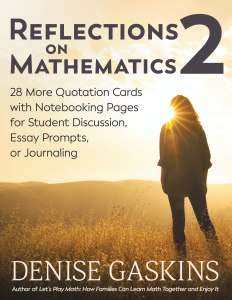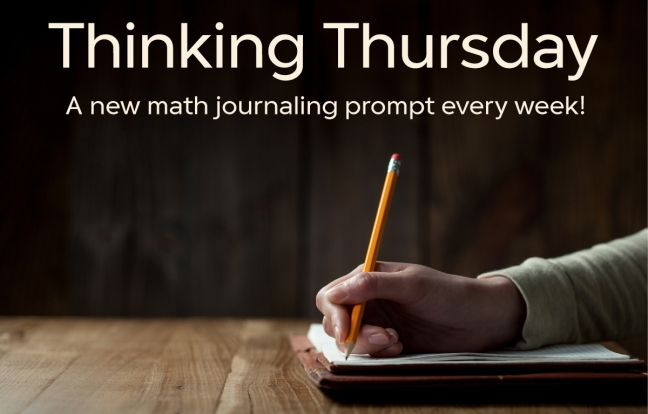Writing to Learn Math: What did the author mean? Put the thought in your own words. Do you agree or disagree? Why?
Do you want your children to develop the ability to reason creatively and figure out things on their own?
Help kids practice slowing down and taking the time to fully comprehend a math topic or problem-solving situation with these classic tools of learning: Notice. Wonder. Create.
Notice: Look carefully at the details of the numbers, shapes, or patterns you see. What are their attributes? How do they relate to each other? Also notice the details of your own mathematical thinking. How do you respond to a tough problem? Which responses are most helpful? Where did you get confused, or what makes you feel discouraged?
Wonder: Ask the journalist’s questions: who, what, where, when, why, and how? Who might need to know about this topic? Where might we see it in the real world? When would things happen this way? What other way might they happen? Why? What if we changed the situation? How might we change it? What would happen then? How might we figure it out?
Create: Create a description, summary, or explanation of what you learned. Make your own related math puzzle, problem, art, poetry, story, game, etc. Or create something totally unrelated, whatever idea may have sparked in your mind.
Math journaling may seem to focus on this third tool, creation. But even with artistic design prompts, we need the first two tools because they lay a solid groundwork to support the child’s imagination.
How To Use a Quotation Prompt
Let students choose how they want to react to the quotation. Or offer one of the following questions:
- What did the author mean? Put the thought in your own words.
- Do you agree or disagree? Why?
- Is it a general principle, or only for specific situations? Describe a time when the quote might apply, or when it might not.
- Tell a time in your life when you lived up to the quotation — or when you wish you had.
- How does the quote relate to math, science, history, or another subject?
Short exercises are great writing practice. But occasionally you’ll want to assign deeper essay topics, such as:
- Look up the author’s name online. Who are/were they, and why do people care what they said?
- What have others said about the same topic? Search out a variety of quotes related to this one. How are they similar? How are they different?
- Does thinking about the quotation make you want to change anything, in yourself or in the world? How could you put that idea into action?
Quotation from Vilfredo Pareto
Give me a fruitful error any time, full of seeds, bursting with its own corrections. You can keep your sterile truth for yourself.
—Vilfredo Pareto
* * *
 This is an excerpt from Reflections on Mathematics 2: 28 More Quotation Cards, available as a digital printable activity guide at my bookstore. Read more about my playful math books at my publisher’s Tabletop Academy Press website.
This is an excerpt from Reflections on Mathematics 2: 28 More Quotation Cards, available as a digital printable activity guide at my bookstore. Read more about my playful math books at my publisher’s Tabletop Academy Press website.
Special Offer: Would you like to access a growing archive of Thinking Thursday prompts and other activity ideas as convenient printable pdf downloads, ready to print and play with your kids? Join me on Patreon for mathy inspiration, tips, printable activities, and more.
“Thinking Thursday: Vilfredo Pareto” copyright © 2024 by Denise Gaskins.
